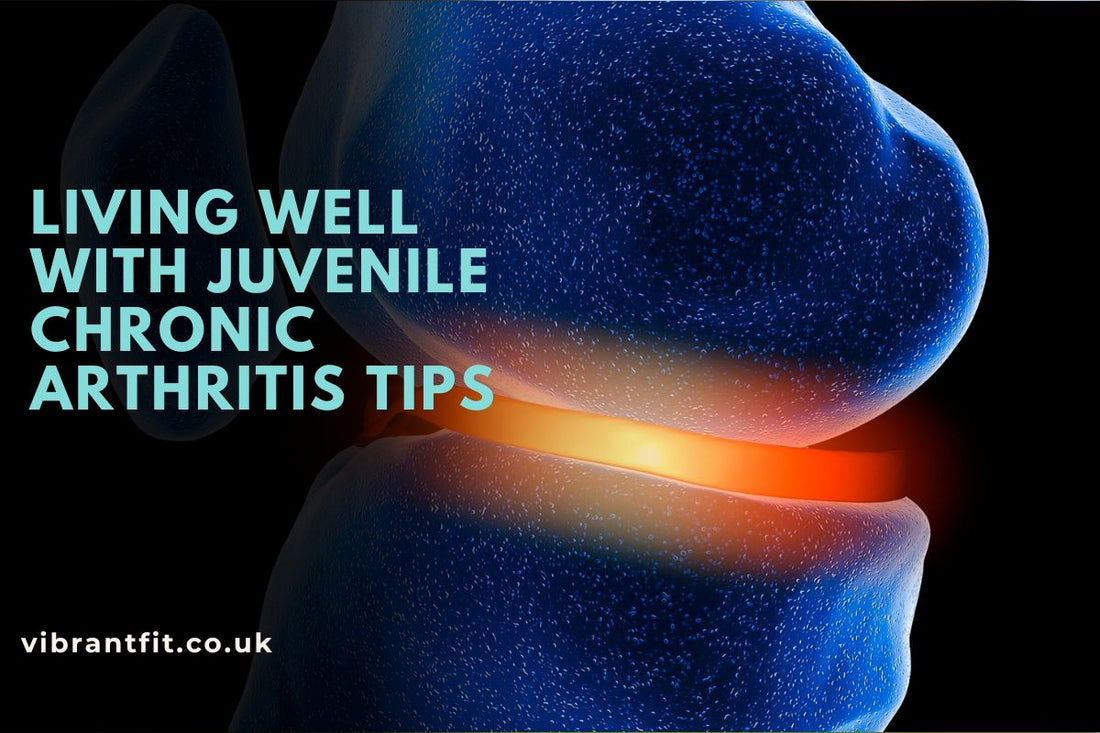
What is Juvenile Chronic Arthritis?
Share
When a child complains about painful or stiff joints, many parents might think it is just growing pains. This is a common assumption, and often the discomfort does pass with time. However, if the pain lasts longer than a couple of weeks or seems to get worse, it might be something more serious. Juvenile chronic arthritis is one such condition that affects children’s joints and can cause lasting problems if not recognised early. Understanding what this condition is and its symptoms can help parents seek the right care for their child.
What Is Juvenile Chronic Arthritis?

Juvenile chronic arthritis (JCA), also known as juvenile idiopathic arthritis (JIA) or juvenile rheumatoid arthritis (JRA), is a long-lasting condition that causes joint inflammation in children under 16. It leads to pain, swelling, and stiffness in the joints. This condition can start in very young kids or develop later during the teenage years. It is one of the most common forms of arthritis in children, affecting about 1 in every 1,000. Though the names vary depending on the region, they all refer to the same issue — inflammation of the joints in children.
Symptoms of Juvenile Chronic Arthritis

The symptoms of juvenile chronic arthritis can vary, but several signs often suggest the condition:
-
Persistent joint pain and swelling
-
Limping without an obvious injury
-
Morning stiffness, making movement difficult
-
Joints feeling warm or tender to the touch
-
Fatigue and increased irritability
-
Recurring fevers and skin rash in some cases
-
Avoiding using or protecting certain joints.
Types of Juvenile Chronic Arthritis
Juvenile chronic arthritis is not a single disease but a group of related conditions. The main types include:
-
Oligoarticular JIA: Affects four or fewer joints, commonly knees or ankles. It is the mildest and most common form. Children with this type may also develop eye inflammation.
-
Polyarticular JIA: Affects five or more joints within the first six months. It is further divided into rheumatoid factor negative and positive, depending on blood test results. It resembles adult rheumatoid arthritis.
-
Systemic JIA: This form affects the whole body, often starting with high fever and rash. It can cause inflammation of internal organs in severe cases.
-
Enthesitis-related JIA: Involves inflammation where tendons or ligaments attach to bones. It usually affects boys and often involves the lower limbs and spine.
-
Psoriatic JIA: Accompanies psoriasis, a skin condition, and may cause swollen fingers or toes.
-
Undifferentiated arthritis: Used when symptoms do not clearly fit other types or overlap multiple types.
Causes and Risk Factors
Juvenile chronic arthritis happens because the child’s immune system gets confused and starts attacking their own joints, causing swelling and pain. Doctors don’t yet know exactly why this happens, but it’s thought to be a combination of genes and things in the environment. If other family members have autoimmune illnesses, the child might have a slightly higher chance of getting it too. Some types of juvenile arthritis are more common in girls. Without treatment, this immune response can lead to joint damage over time.
Complications of Juvenile Chronic Arthritis
If left untreated, juvenile chronic arthritis can lead to several serious issues:
-
Damage to joints causing deformity or loss of function
-
Growth problems such as uneven limb length or slowed overall growth
-
Eye inflammation (uveitis) which can cause vision problems or blindness if untreated
-
Difficulties in everyday activities and potential impact on mental health.
Regular monitoring and treatment help reduce these risks and improve long-term outcomes.
Treatment Options
There is currently no cure for juvenile chronic arthritis, but treatment can control symptoms and protect joints. The main goals are to reduce inflammation, relieve pain, and maintain function. Treatment often includes:
-
Non-steroidal anti-inflammatory drugs (NSAIDs): Reduce pain and swelling
-
Disease-modifying anti-rheumatic drugs (DMARDs): Slow disease progression
-
Biologic therapies: Target specific immune molecules to reduce inflammation
-
Corticosteroids: Used for severe inflammation or flares
-
Physical therapy: Keeps joints flexible and muscles strong
-
Supports and braces: Help reduce pain and improve joint stability.
Living with Juvenile Chronic Arthritis
Children with juvenile chronic arthritis can lead active, full lives with proper care. Physical and mental health depend on encouraging physical activity and regular childhood experiences. Also crucial is handling mental issues and exhaustion. Families usually gain from instructional tools and support groups. Children can live well despite their illness when doctors, therapists, and carers work as a team.
Supportive Products for Juvenile Chronic Arthritis

Living with juvenile chronic arthritis can be challenging for children, but using the right support products can make a big difference. VibrantFit UK offers a range of braces and splints designed to help ease pain and provide stability. The ErgoThumb Spica Splint is great for protecting and supporting the thumb and wrist, helping to reduce swelling and discomfort. For extra wrist support, the TFCC Support Wrist Brace offers a comfortable fit with adjustable straps to keep the joint stable. If your child struggles with knee pain, the Knee Support is breathable and gentle enough to wear all day. The Ankle Support is lightweight and helps keep the ankle steady without limiting movement. For forearm and wrist issues, the Arm Splints provide good immobilisation to ease pain and help with healing. These supports are made to fit growing children and work best when combined with the right medical care.
Also read : What is CMC Arthritis
Conclusion
Although serious, juvenile chronic arthritis is treatable. Early symptom recognition and timely treatment can help a youngster grow and avoid joint damage. Many youngsters recover with treatment and lead fit, active lives. Do not wait to see a doctor if you think your child might have juvenile chronic arthritis.
